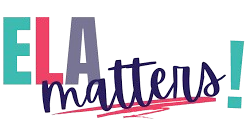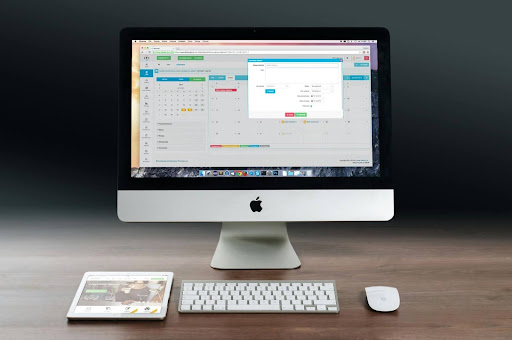ERP software doesn’t sound exciting, but it’s the quiet engine behind how most organizations actually function. The bit that keeps finance in line with HR and planning in sync with procurement. Take it away and suddenly things stop lining up – data goes missing, budgets drift, and decisions take twice as long as they should.
ERP (Enterprise Resource Planning) software basically ties all those moving parts together. It brings finance people and operations into one system so everyone’s working from the same picture – no crossed wires, no outdated spreadsheets running the show.
In the public sector, that kind of clarity matters even more. Tight budgets, endless reporting, constant pressure to do more with less – it’s a balancing act. The right ERP system cuts through the noise to connect people and automate the dull stuff. And it gives teams the kind of visibility that refines smooth operations.
Plenty of platforms promise these results, but not all of them deliver.
Here are some of the best ERP systems to keep complex organizations moving in the right direction.
Unit4 – Best for Unified, People-Centric Emergency Operations
Unit4 sits in its own category when it comes to public-sector ERP. It isn’t built for generic business processes; it’s designed for organizations that exist to serve people – police, fire, ambulance, and rescue services that can’t afford system delays or tangled data.
It pulls finance, HR, procurement, and planning into the same space – all cloud-based, all talking to each other. Suddenly, the teams handling budgets, resources, and scheduling see one unified picture. No silos. No guessing. When priorities shift or funding changes, everyone moves with it instead of waiting for paperwork to catch up.
What makes Unit4 stand out is how human it feels for something so technical. The dashboards are streamlined to make sense intuitively, and the analytics don’t drown you.
Staff can
- Log in
- Tweak schedules
- Book training
- Arrange time off
All without waiting on a chain of approvals.
Behind the scenes, the software stays running, it’s scalable, and is ready and built for the 24/7 reality in which the emergency sector lives.
Implementation is faster than most, you’ll be pleased to know. Unit4’s preconfigured public sector models can reduce deployment, meaning you get teams operational faster, thus minimizing disruption. For emergency service organizations, speed can mean everything.
Unit4 isn’t just another ERP option – it’s a system that’s built to keep essential operations moving smoothly, whatever the day brings.
Oracle NetSuite – Best for Large, Multi-Agency Integration
Oracle NetSuite is one of the most established ERP systems out there, and it’s built to manage operations that span multiple departments, locations, or even entire agencies. For public sector teams juggling finance, procurement, and planning across different regions, scale matters, and Oracle NetSuite delivers this and then some.
For peace of mind, everything runs in the cloud, meaning data updates in real time, regardless of where it comes from. What does this mean for you in practice? This means your finance teams can track spending while procurement handles supplier contracts, and department heads can still see the full picture without waiting for reports. It’s that seamless visibility that makes NetSuite such a strong choice for larger organizations or those working with multiple service partners.
Plus, your dashboards and approval chains can be set up to match how your organization really works—not the other way around. The modules adapt easily to your structure, helping big networks stay organized when everything is moving at once.
SAP Public Sector – Best for Advanced Analytics and Compliance
SAP promises to “achieve the best outcomes for your citizens with government software solutions that help.”
These solutions aim to modernize digital citizen services and harness the power of AI and data, all while helping you achieve operational excellence and resilience covered thanks to tight compliance and cloud security controls.
For government agencies running under tight scrutiny, where everything needs to add up, this ERP system covers you exactly where you need it.
It pulls finance, HR, and operational data into one place. Then, it layers it with analytics and AI that are specifically built for public-sector pressure. Nothing is overlooked, and your budgets, grants, and vendors are all right there in one place, showing in real time instead of being in half a dozen spreadsheets. You see what’s happening as it happens, which makes it a lot harder for things to slip through the cracks.
SAP goes deep, not just wide. It keeps everything clean, and while it’s not the lightest or the easiest system in this list – that’s not what you’re picking SAP for – you’re picking it for the extra depth and compliance that keeps all of your bases covered.
Infor CloudSuite Public Sector – Best for Streamlined Procurement and Grant Management
Infor Cloudsuite Public Sector is the tool you need to keep everything tidy when budgets start to blur. It’s built specifically for those everyday admin tasks that eat into public sector time – supplier management, procurement chains, grant tracking, and all the financial threads that tie them together.
This means you’re not juggling a dozen systems to get what you need, you can find it all in one connected place. You can follow each stage of the process – from initial requests through to final payments. And see easily where money is being spent or lost. The system automates the repetitive stuff – your approvals, purchase orders, and reports so nothing stalls if someone is out of the office.
Infor isn’t the all-in-one tool; it focuses on procurement and funding running smoothly, delivering that quality reliability exactly where you need it.
Workday – Best for Workforce Visibility and HR Flexibility
Workday is the ERP that makes the people side of things manageable. Unlike other systems in this list that focus more on the finance side of operations, Workday’s strength lies in its view of the workforce. – Who is working? Where, and at what cost? That is why Workday is perfect for organizations dealing with remote or hybrid teams.
In Workday, HR, payroll, and finance are pulled together so they sync automatically. Managers can see staffing gaps, price leave, and adjust office headcounts in real time, and this is the magic that keeps things balanced without the usual lags or delays.
You will find the clean dashboard simple to navigate, so teams can act on information rather than search for it. This improves flexibility and reliability and reduces chaos.
Final Words
Good ERP software doesn’t just keep numbers straight; it understands the role of finance within the organization and keeps everything connected. Whether it’s managing budgets or entire operations, the right systems turn chaos into coordination. And for public sector teams under constant pressure, it’s that kind of quiet reliability that keeps everything running.

